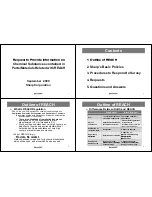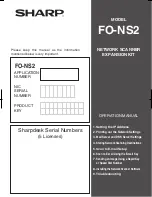
The traffic class name can be up to 31 characters. It cannot include spaces.
2.
(Optional) Specify strict-priority scheduling across the fabric for queues in the
traffic class.
host1(config-traffic-class)#
fabric-strict-priority
3.
(Optional) For Juniper Networks ERX1440, E120 , and E320 Broadband Services
Routers, specify the relative weight for queues in the traffic class in the fabric.
host1(config-traffic-class)#
fabric-weight 12
Fabric weight controls the bandwidth of fabric queues associated with the traffic
class. It does not control the weight of egress queues associated with the traffic
class. If multiple traffic classes are strict priority, the fabric weight determines
which class gets more bandwidth.
The weight value is in the range 1–63. The default is 8. Zero is not a valid weight.
Related Topics
■
Monitoring Traffic Classes and Traffic-Class Groups for Defined Levels of Service
on page 16
■
fabric-strict-priority
■
fabric-weight
■
traffic-class
Configuring Traffic-Class Groups That Define Service Levels
You can configure a traffic-class group and enter Traffic Class Group Configuration
mode, from which you can add classes to or delete classes from the group.
Each traffic class can appear in only one traffic-class group. If not explicitly added
to a traffic-class group, the traffic class is considered to be ungrouped.
To configure a traffic-class group:
1.
Create a traffic-class group by assigning a name that represents the type of service
and enter Traffic Class Group Configuration mode.
host1(config)#
traffic-class-group assured slot 9 extended
host1(config-traffic-class-group)#
The traffic class name can be up to 31 characters. It cannot include spaces.
If you do not specify a keyword, the group is strict-priority by default.
You can use the
auto-strict-priority
keyword to explicitly configure a single
traffic-class group with strict-priority scheduling, regardless of the scheduler
profile associated with the group node.
You can use the
extended
keyword to configure up to three extended traffic-class
groups. Scheduling for these groups is determined by the scheduler profile
associated with the group node. If an explicitly configured strict-priority group
Configuring Traffic-Class Groups That Define Service Levels
■
15
Chapter 2: Defining Service Levels with Traffic Classes and Traffic-Class Groups
Содержание JUNOSE 11.1.X - QUALITY OF SERVICE CONFIGURATION GUIDE 3-21-2010
Страница 6: ...vi...
Страница 24: ...xxiv List of Figures JUNOSe 11 1 x Quality of Service Configuration Guide...
Страница 28: ...xxviii List of Tables JUNOSe 11 1 x Quality of Service Configuration Guide...
Страница 33: ...Part 1 QoS on the E Series Router Quality of Service Overview on page 3 QoS on the E Series Router 1...
Страница 34: ...2 QoS on the E Series Router JUNOSe 11 1 x Quality of Service Configuration Guide...
Страница 44: ...12 Classifying Queuing and Dropping Traffic JUNOSe 11 1 x Quality of Service Configuration Guide...
Страница 76: ...44 Scheduling and Shaping Traffic JUNOSe 11 1 x Quality of Service Configuration Guide...
Страница 156: ...124 Monitoring QoS Scheduling and Shaping JUNOSe 11 1 x Quality of Service Configuration Guide...
Страница 162: ...130 Scaling Subscribers on the TFA ASIC with QoS JUNOSe 11 1 x Quality of Service Configuration Guide...
Страница 190: ...158 Interface Solutions for QoS JUNOSe 11 1 x Quality of Service Configuration Guide...
Страница 238: ...206 Monitoring QoS Configurations for L2TP JUNOSe 11 1 x Quality of Service Configuration Guide...
Страница 256: ...224 Managing Queuing and Scheduling with QoS Parameters JUNOSe 11 1 x Quality of Service Configuration Guide...
Страница 344: ...312 Monitoring and Troubleshooting QoS JUNOSe 11 1 x Quality of Service Configuration Guide...
Страница 388: ...356 Monitoring QoS Parameter Definitions JUNOSe 11 1 x Quality of Service Configuration Guide...
Страница 391: ...Part 8 Index Index on page 361 Index 359...
Страница 392: ...360 Index JUNOSe 11 1 x Quality of Service Configuration Guide...
















































